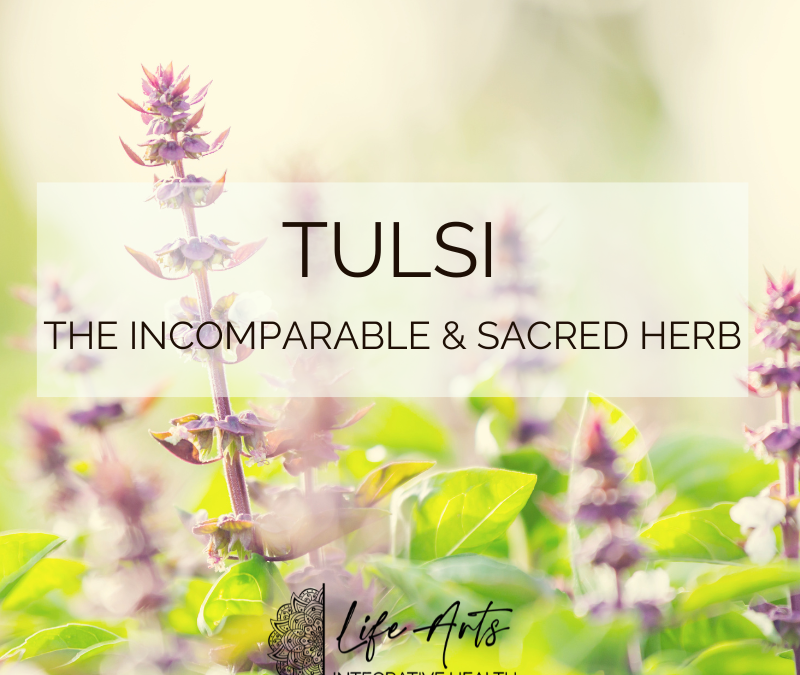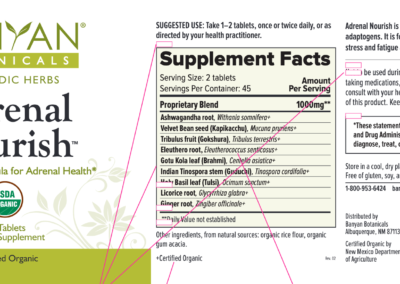
Grapefruit & Citrus: Bright Balancers
Grapefruit & Citrus are bright balancers that have a uniquely sunny spot in your culinary and nutrition worlds. Their acidic flavor and vitamin C-packed composition add health to your diet and to every dish they touch.
A squeeze of lemon on a piece of fish. The lime in your favorite guacamole recipe. Citrus are bright beams of light, balancing flavors while dispensing important nutrients. They come by it naturally!
Nutritional & Health Benefits of Grapefruit
Vitamin C, Antioxidants & more
Grapefruit is renowned for its high Vitamin C content. This essential nutrient is not just about warding off colds; it’s a powerful antioxidant that plays a crucial role in your body’s balance by helping to remove excess free radicals. Free radicals, a natural byproduct of metabolism, can in excess damage cells and tissue, so contribute to aging and various health issues.
Lifestyle choices play a role in your free radical-antioxidant balance. Excess stress, sugar, alcohol, and ultra-processed foods can create more free radicals, while a nutrient-dense whole foods lifestyle that includes antioxidant-rich herbs, fruits, spices, and vegetables helps keep a healthy balance. By incorporating grapefruit into your diet, you provide your body with a natural defense system against these potentially harmful agents.
But the story of grapefruit & citrus bright balancing health benefits doesn’t end with Vitamin C. This fruit is also packed with many other antioxidants (one study found 38!). Flavonoids, beta-carotene, lycopene and naringenin are especially rich in the pink and red varieties. These antioxidant compounds have been linked to reducing inflammation, promoting anti-fungal and anti-microbial action, improving blood sugar, improving heart health, support for mitochondria (the energy factories in our cells) and even lowering the risk of some cancers.
Grapefruit & Heart Health
Speaking of heart health, numerous studies have shown that grapefruit can have a beneficial impact. Its fiber, potassium, lycopene, Vitamin C, and choline content all contribute to heart health. One study found that consuming grapefruit regularly could reduce blood pressure and cholesterol levels, two significant factors in heart disease.
Awareness: Grapefruit – Medication Interactions
However, it’s crucial to be aware of grapefruit’s interactions with certain medications. This is due to a compound called furanocoumarin found in grapefruit that can affect cytochrome P450 3A4 isoenzyme and P-glycoprotein metabolism in some medications, potentially leading to very serious health effects. More than 85 medications (including some statins) are known to interact with grapefruit. Taking grapefruit with a statin can potentially boost the effect of that medication up to 12 times, so increasing the chances of liver or other organ damage. Here’s more on that from the FDA, and if you are on medications ask your healthcare professional about it.
Other citrus has some, but much less, interactions with medications. Orange juice, lemon juice, pomegranate juice, lime juice, and wheat grass juice have a few interactions, so check with your healthcare provider about drug-food interactions, and DON’T generally take your medications with juice. Water is better as a rule of thumb, and generally, if you have some juice a couple hours after taking your medications, the risk tends to be less.
Listening to Your Body: The Key to Enjoying Citrus
The most important lesson in your wellness journey is learning to listen to your body. Pay attention to how your body reacts to grapefruit. If you notice any discomfort or adverse reactions, it might be best to consult with a healthcare professional.
Grapefruit Seed Extract & Immunity
Moving beyond its juicy interior, grapefruit’s medicinal prowess extends to its seeds, peel and leaves. Grapefruit seed extract (GSE), derived from the seeds, pulp, and white membranes of the fruit, is touted for its antimicrobial properties. Historically, GSE has been used as a natural remedy to treat infections and boost immunity. While more research is needed to fully understand its efficacy, early studies show promise in GSE’s ability to combat a wide range of bacteria and fungi.
In this light, grapefruit & citrus bright balancers aren’t just fruit; they’re a testament to the wonders of nature, blending deliciousness with health benefits. Its story is a reminder of how traditional practices and modern science can come together, offering us tools to enhance our health and well-being.
Grapefruit Folklore & Metaphysics
Growing up, I always found something magical about grapefruits. They appeared in the winter around the holidays when local fresh fruit was just not available. Their vibrant color and invigorating aroma hinted at something beyond their tangy taste. Sure enough, grapefruit has a role in folklore and metaphysics, a world where tradition and energy intertwine with the physical aspects of this balancing fruit.
Grapefruit & citrus: A Global Perspective
In many cultures around the world, citrus fruits, especially grapefruits, have held a special place in folklore. In the sunny groves of the Mediterranean, grapefruits were often considered symbols of prosperity and fertility. Their bright color and round shape were reminiscent of the sun, embodying vitality and life.
Moving across the globe, citrus fruits, including grapefruits, play significant roles in cultural ceremonies. For instance, during Lunar New Year celebrations in China, citrus fruits are common gifts, symbolizing good luck and fortune. Similarly, in many parts of the world, citrus fruits are used in festive decorations, their bright colors and fresh scents adding to the celebratory atmosphere.
Grapefruit in Herbalism & Home Remedies
In herbalism, grapefruit has a long-standing reputation. Herbalists from various traditions have used grapefruit seed extract as a natural remedy for its purported antimicrobial and immune-boosting properties. Though these uses are more anecdotal than scientifically proven, they speak to the deep-rooted belief in grapefruit’s healing powers.
My own exploration into herbalism introduced me to intriguing uses of grapefruit. In some communities, grapefruit peels are dried and used in teas as a remedy for coughs or colds, leveraging their high vitamin C content and essential oils. Others have shared with me their use of grapefruit peel infusions in baths for their refreshing and skin-toning properties. I have used grapefruit essential oil as a clean refreshing fragrance in my humidifier.
Metaphysics of Grapefruit
Citrus Aromatherapy: Uplifting the Spirit
Now, let’s delve into the metaphysical realm. Aromatherapy has long used citrus scents, particularly grapefruit, for their uplifting and energizing properties. It’s no coincidence that I loved the refreshing smell of grapefruit in the air; grapefruit’s aroma has long been believed to help dispel mental fatigue and induce positive feelings.
Grapefruit & Chakra Balancing
In the practice of energy work and chakra balancing, grapefruit holds a special place. Its vibrant energy is said to resonate with the third chakra – the bright city of jewels (Manipura) – or solar plexus chakra, the energy center associated with confidence and self-empowerment. By incorporating grapefruit into my meditation and energy practices, I’ve found a greater sense of balance and inner strength.
The Ayurvedic Angle: Citrus and Body Harmony
When I first began my study of the world of Ayurveda, I was fascinated by how this ancient system of medicine viewed food not just as nourishment, but as an energetic key to balancing the body and mind. Citrus fruits, and particularly grapefruit, have unique qualities in Ayurveda that can harmonize our inner energies.
Understanding Citrus in Ayurveda
Ayurveda, a holistic healing system that originated in India over 5,000 years ago, classifies foods based on their elemental properties and effects on the body’s doshas (energy types) – Vata, Pitta, and Kapha. Citrus fruits, with their refreshing and cleansing properties, are often used to balance these energies.
Grapefruit, with its sour and slightly bitter taste, is considered particularly beneficial in Ayurveda. It’s believed to aid digestion, stimulate the metabolism, and help detoxify the body. For someone with a Kapha constitution like me, prone to sluggishness and congestion, the invigorating nature of grapefruit is a blessing.
The Significance of Taste: Sour and Bitter in Ayurvedic Diet
In Ayurveda, taste (Rasa) is a critical aspect of diet and nutrition. The six tastes – sweet, sour, salty, bitter, pungent, and astringent – each have their effects on the doshas. Sour and bitter, two predominant tastes in grapefruit, have action.
Sour taste, found abundantly in grapefruit, is known to stimulate appetite, aid digestion, and energize the body. It’s particularly beneficial for Vata and Kapha individuals, helping to balance their earthier, cooler nature. However, it should be consumed in moderation by Pitta types, who already have plenty of internal ‘fire’.
Integrating Grapefruit & Citrus into Your Daily Life
Embracing the zesty world of grapefruits and their citrus cousins can be a delightful and healthful addition to your daily routine. My journey with these fruits has taught me that their benefits extend beyond their nutritional value; they are powerful allies for wellness and balance.
Tips for Including Citrus
Incorporating grapefruit into your daily life doesn’t have to be complicated.
Here are a few tips:
- Morning Ritual: Start your day with a glass of warm water infused with fresh grapefruit juice. This not only hydrates you but also kickstarts your metabolism.
- Snack Smart: Replace processed snacks with a bowl of fresh grapefruit slices. It’s refreshing, hydrating, and packed with nutrients.
- Citrus Dressings: Add a zing to your salads with grapefruit-based dressings. Mix grapefruit juice, olive oil, a hint of honey, and your favorite herbs for a tangy dressing.
Simple Recipes: From Breakfast to Dinner
- Breakfast: Grapefruit Avocado Toast – Top whole-grain bread with mashed avocado, grapefruit segments, a sprinkle of sea salt, and a dash of cayenne pepper.
- Dinner: Citrus-Herb Roasted Chicken – Marinate chicken with grapefruit juice, garlic, rosemary, and thyme. Yum!
Culinary Tips
- When cooking with grapefruit, balance its sourness with a touch of sweetness or a creamy element.
- Use grapefruit zest to add a burst of citrus flavor to baked goods or as a garnish.
DIY Citrus Infusions: A Step-by-Step Guide
Creating your own citrus infusions is both fun and beneficial. Here’s a simple way to make a grapefruit infusion:
- Ingredients: Sliced grapefruit, fresh herbs (like mint or rosemary), water.
- Method: In a large pitcher, combine the grapefruit slices and herbs. Fill with water.
- Infuse: Let it sit for a few hours or overnight in the refrigerator.
- Enjoy: Serve chilled for a refreshing and hydrating drink.
Listening to Your Body: The Key to Enjoying Citrus
The most important lesson in your wellness journey is learning to listen to your body. Pay attention to how your body reacts to grapefruit. If you notice any discomfort or adverse reactions, it might be best to consult with a healthcare professional.
High-Quality Grapefruit & Citrus Products
Feeling like a little grapefruit skincare, or a supplement bursting with citrus nutrients? I’ve got you covered – here is my list of goodies – supplements and personal care products to bring a little citrus into your life.
Fullscript is a high-quality online formulary that carries nutritional supplements and personal care products. If you have or set up an account through me, you’ll get 25% off everything, and free shipping if you order more than $50.
I’m an affiliate with Fullscript, so if you do purchase through my account, I receive a small commission.
Deepening Your Connection: Grapefruit as a Plant Initiation Ally
What’s a Plant Initiation?
Plant initiation is an ancient practice that involves forming a deep, spiritual connection with a plant to understand its essence and benefits on a deeper level. This practice emphasizes the significance of plants in our journey of self-discovery and connection with nature.
Grapefruit in Plant Initiation
Grapefruit, with its bold flavor vibrant energy, and support for the 3rd chakra, is an excellent ally for plant initiation. By mindfully bringing grapefruit into your body in several ways, meditating with its essence, and using its essential oils, you can deepen your connection to this powerful strength-giving fruit.
My own experience of this powerful plant – feeling its texture, inhaling its aroma, slowly savoring its flavor, and feeling the support of its energizing strength – brought a heightened awareness of just how much its properties provide my body and spirit. In this shamanic practice, plants give you advice! This mindful engagement opened up a profound dimension in my relationship with grapefruit, one that transcends the physical and ventures into the spiritual.
Grapefruit & Citrus: Bright Balancers
You’ve now explored the rich tapestry of special fruit where science, tradition, and personal experience intertwine, each thread adding depth and color to our understanding.
The Fusion of Science, Tradition, and Your Personal Experience
From the very first zesty burst of grapefruit on your palate to the deeper understanding of its role in folklore, metaphysics, and Ayurveda, this journey is enlightening. You’ve seen how science validates the health benefits of grapefruit – its role in heart health, its wealth of vitamin C and antioxidants, and the intriguing research on citrus flavonoids. But beyond the laboratory and clinical studies, you’ve delved into the rich heritage of grapefruit in traditional remedies and cultural practices, where it’s more than just a fruit – it’s a symbol, a healing agent, and a part of life’s celebrations.
Your personal experiments and experiences with grapefruit, whether it’s starting your day with refreshing grapefruit-infused water or exploring its use in energy work, can deepened your connection with this citrus wonder. It’s these personal touches, the little experiments and mindful moments, that truly bring the science and tradition to life.
Embrace Grapefruit & Citrus in Your Path to Wellness
I encourage you to explore the world of grapefruit and citrus in your way. Whether it’s incorporating these fruits into your diet, using them in home remedies, or simply enjoying their refreshing aroma, there’s a multitude of ways to embrace their benefits. Remember, the path to wellness is as much about the journey as it is about the destination. It’s about finding joy in the small things, like the tart taste of grapefruit on a summer morning, and the peace in the rituals, like preparing citrus-infused water for the day ahead.
Embrace grapefruit not just as a food, but as a companion on your wellness journey. Let it inspire you to explore, experiment, and connect with the world around you in new and meaningful ways. Most importantly, let it remind you of the beauty in blending the wisdom of tradition with the insights of science, all woven together by your unique personal experiences.
Please remember that the journey doesn’t end here. Each grapefruit you peel, each slice savored, is a step further on your path to wellness. So, go forth with zest and enthusiasm, and let your health and life’s journey of savoring continue.
Sources
Pollicino F, Veronese N et al. Mediterranean diet and mitochondria: New findings. Experimental Gerontology 176 (2023) 112165. https://doi.org/10.1016/j.exger.2023.112165
Duda-Madej, Anna, et al. “Naringenin and Its Derivatives—Health-Promoting Phytobiotic against Resistant Bacteria and Fungi in Humans.” Antibiotics, vol. 11, no. 11, 15 Nov. 2022, p. 1628, https://doi.org/10.3390/antibiotics11111628
Gandhi, Gopalsamy Rajiv, et al. “Citrus Flavonoids as Promising Phytochemicals Targeting Diabetes and Related Complications: A Systematic Review of in Vitro and in Vivo Studies.” Nutrients, vol. 12, no. 10, 23 Sept. 2020, p. 2907, www.ncbi.nlm.nih.gov/pmc/articles/PMC7598193/, https://doi.org/10.3390/nu12102907.



























